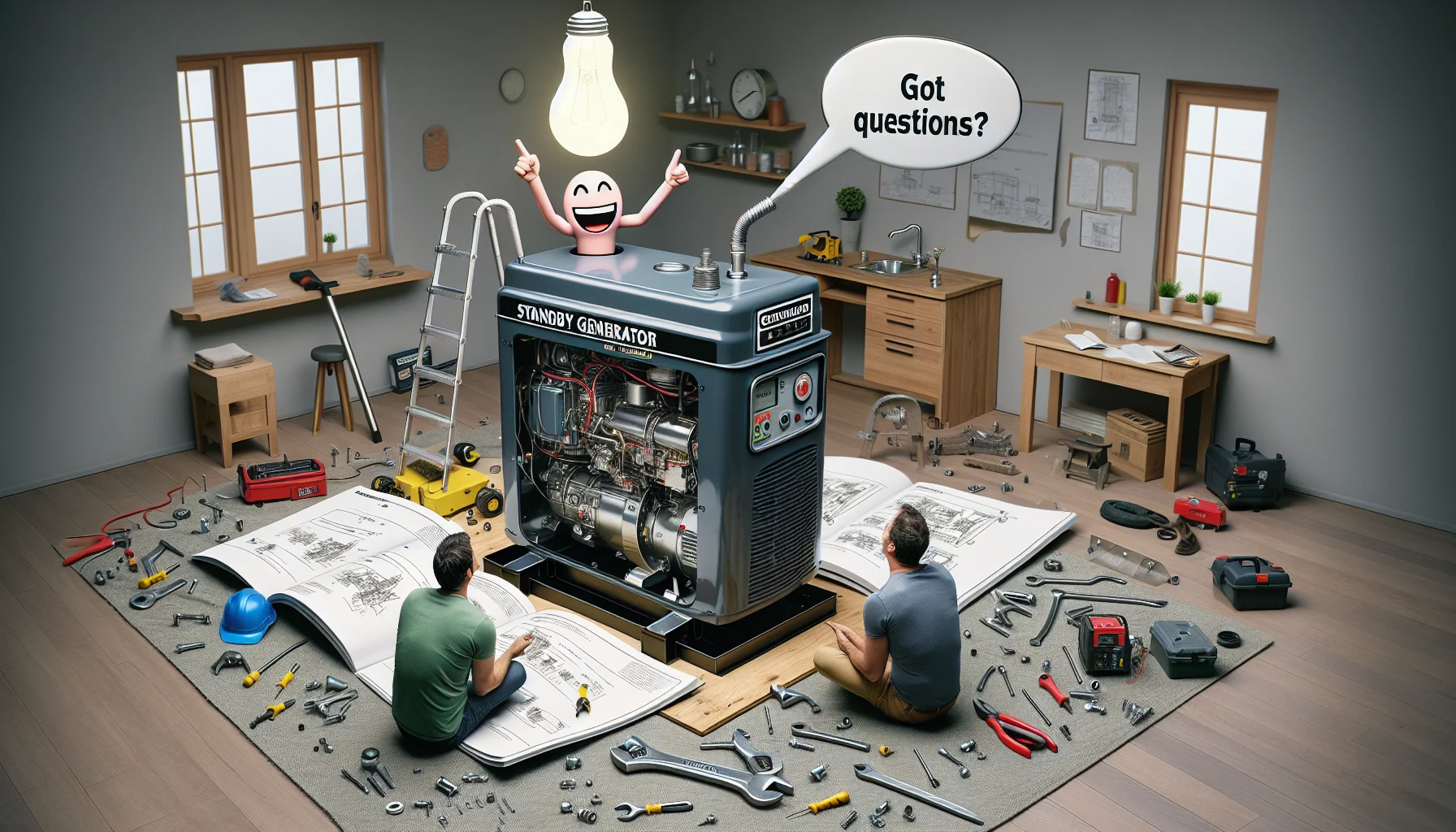Standby Generators FAQs Quiz
Test Your Knowledge
Question of
Standby Generators FAQs
Standby generators play a crucial role in providing a reliable power source during outages, ensuring that homes and businesses maintain their operations without interruption. These generators automatically activate when the power goes out, offering a seamless transition to keep essential appliances and systems running smoothly. Understanding the importance of standby generators can help individuals and organizations make informed decisions about their energy resilience strategies.
How Do Standby Generators Work?
Standby generators are designed to provide an immediate solution to power outages, ensuring that homes and businesses can continue to operate without interruption. These generators are permanently installed outside buildings and are directly connected to the electrical panel. The working mechanism of standby generators revolves around an automatic transfer switch (ATS) and the generator unit itself. When the ATS detects a disruption in the utility power supply, it signals the generator to start. This process happens within seconds of a power outage. The generator then begins to produce electricity, which is routed through the ATS to the building, bypassing the regular power lines. Once the utility power is restored, the ATS automatically switches the power source back to the main line and shuts off the generator, readying it for the next outage. This seamless process ensures that power supply is uninterrupted, making standby generators a reliable backup power source.
Types of Standby Generators
- Diesel Generators - Known for their efficiency and longevity, diesel generators are a popular choice for heavy-duty operations. They operate using diesel fuel, which is often more readily available during power outages.
- Natural Gas Generators - These generators are connected to the natural gas supply, offering a convenient and uninterrupted fuel supply. They are ideal for locations with a reliable natural gas infrastructure.
- Propane Generators - Utilizing propane as a fuel source, these generators are known for their clean burning and are often used in areas where natural gas is not available. Propane can be stored indefinitely, making it a reliable option for emergency power.
Installation Process
The installation of a standby generator involves several critical steps that ensure its efficient and safe operation. Initially, a suitable location for the generator is identified, keeping in mind local building codes and the manufacturer's recommendations. This is followed by the preparation of the site, including any necessary concrete pads for the generator to sit on. Electrical and fuel connections are then meticulously made, requiring precise adherence to safety standards and regulations. Given the complexity and the need for compliance with various codes, professional installation by a certified technician is strongly recommended to ensure the generator's optimal performance and longevity.
Maintenance and Safety Tips
- Regularly check oil levels and change the oil according to the manufacturer's guidelines.
- Inspect the air filter and replace it as necessary to ensure efficient operation.
- Test run the generator at least once a month to ensure it starts and runs properly.
- Ensure the generator is placed in a well-ventilated area to prevent carbon monoxide poisoning.
- Keep the generator dry and do not use it in rainy or wet conditions to avoid electrocution risks.
- Store fuel in a safe and appropriate container away from the generator to reduce fire risks.
- Check and maintain the correct coolant level in the generator to prevent overheating.
- Secure all connections tightly to prevent any sparks or loose wires.
- Never refuel the generator while it is running; always turn it off and let it cool down first.
- Keep children and pets away from the generator to ensure their safety.
Cost Considerations
When considering the acquisition of a standby generator, several factors play a crucial role in determining the overall cost. Firstly, the purchase price of the generator itself can vary widely based on its capacity, brand, and features. Secondly, installation fees can significantly impact the total expenditure. This includes not only the labor cost but also any necessary modifications to your property to accommodate the generator. Lastly, ongoing maintenance costs should be factored into the budget. Regular servicing is essential to ensure the generator's reliability and longevity, and this entails periodic expenses. Understanding these cost components is vital for making an informed decision about investing in a standby generator.
Choosing the Right Standby Generator
| Feature | Power Output | Suitability |
|---|---|---|
| Basic Standby Generator | 7-12 kW | Small homes (1-2 bedrooms) |
| Mid-Range Standby Generator | 12-20 kW | Medium homes (3-4 bedrooms) |
| High-Capacity Standby Generator | 20-48 kW | Large homes or small businesses |
| Commercial Standby Generator | 50+ kW | Large businesses or industrial needs |












